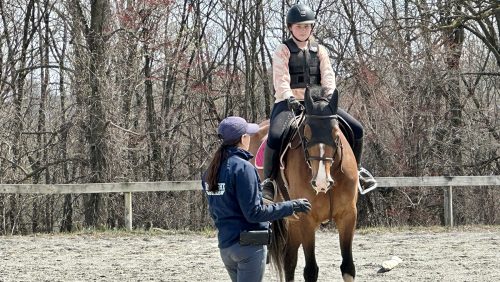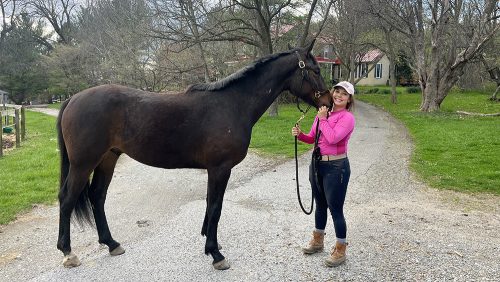When a light suddenly goes out, it takes a moment for your eyes to adjust to the darkness. When Alfred Patrick “Paddy” Smithwick passed away on Nov. 14, 1973, at the tender age of 46, the steeplechasing world lost one of its brightest stars.
Born in 1927, Smithwick began his career as an amateur in 1945 at the age of 19. He quickly climbed into the professional ranks in 1946, and by 1947 he finished 10th in the National Steeplechase and Hunt standings after winning seven races that year.
Smithwick was well known for being able to teach any horse to gallop and jump over hurdles or timber, and if they were fast enough, it was likely that with Smithwick in the irons, they’d end up in the winner’s circle. There was no one better at keeping a horse on his feet and charging to the finish line.
He won 18 races from 128 rides in 1950, when he topped the year-end standings for the first time, beating his friend and rival Frank “Dooley” Adams. Adams would top the standings for the next five years before he hung up his helmet.
Smithwick was also known for his distinct “back-seat” style. From 1956 to 1958, he won 84 times out of 390 starts. He won the title again in 1962.
However, in 1966, tragedy struck in the form of a terrible fall during a race at Monmouth Park, (N.J.).
“A week later I was allowed to see him,” wrote his son Patrick Smithwick in an article titled “Remembering Pop” that ran in the Nov. 23, 1973, issue of the Chronicle courtesy of The Horseman’s Journal. “The earliest stories I had heard were that he wouldn’t live. But in the last few days I was told he would live, but would be paralyzed for life. The horse had fallen, catapulting Pop forward. The ground had been hard and dry, and Pop’s neck had taken all the pressure of the fall. His spinal cord had snapped in his neck.”
Paddy retired from riding after the accident, but his 398 victories over the span of his career included some of the country’s biggest races on some of the sport’s greatest horses. He returned to training and riding before lung cancer claimed him.
ADVERTISEMENT
Part of Paddy’s tremendous success was in large part due to his partnership with his younger brother, D. Michael Smithwick. “Mikey” was a top timber rider himself and won the Maryland Hunt Cup six times between 1948 and 1960.
Most of Paddy’s mounts were trained by Mikey, which made them a dominating partnership during their era. Mikey claimed the leading trainer championship from 1956-1960, won again in 1962, and then held the title from 1966-1969. He died on May 29, 2006, at the farm in Hydes, Md., where he and his brother once trained horses.
Tough Way To Make A Living
Life as a steeplechase jockey wasn’t all celebration and glamour, however.
Paddy led a grueling existence. Between the weekend hunt meets and the major track racing, he rode 100-150 horses a year.
In between race riding, he schooled horses for his brother almost every morning in Maryland or at Belmont Park (N.Y.). He also had to make weight.
“Pop was tall and built more like a lightweight boxer than a jockey,” wrote Patrick. “All he ate was steak and salad at night and he had to sweat every time he rode.”
Patrick recalled his father wearing thermal underwear and blasting the heater in the car on the way to races in order to get the last pounds off. Paddy was driven to succeed and win, and he did so with unrelenting dedication.
ADVERTISEMENT
Despite that, though, he had a surprisingly gentle demeanor. In the 1958 edition of American Steeplechasing, it was observed that Paddy only received one fine in all his years of riding, and that his “good sense and spirit of fair play” kept him out of trouble.
“If a popularity poll were taken among steeplechase riders, the name of Alfred Patrick Smithwick would lead the list,” according to the article. “Quiet, unassuming, but a man with very articulate ideas about horses and riding, he is the personification of a gentleman, a race rider and a great credit to the sport.”
Paddy was inducted into the National Thoroughbred Racing Hall of Fame in 1973 and remains second to Joe Aitcheson in the all-time win standings for steeplechase jockeys.
The A.P. Smithwick Memorial, a steeplechase stakes race for 4-year-olds and up at Saratoga (N.Y.), is named after Paddy. The race began in 1980 and attained stakes status in 1996. In 2010 it ran as a Grade II stakes race for a purse of $75,000.
In 2006, Paddy’s son Patrick published Racing My Father, a novel about growing up in Paddy’s footsteps. He still has his father’s saddle and boots.
One of web writer Coree Reuter’s favorite parts of working at The Chronicle of the Horse is adventuring up into the attic. While it’s occasionally a journey that requires a head lamp, GPS unit and dust mask, nearly 75 years of the equine industry is documented in the old issues and photographs that live above the offices, and Coree is determined to unearth the great stories of the past. Inspired by the saying: “History was written on the back of a horse,” she hopes to demystify the legends, find new ones and honor the horses who have changed the scope of everyday life with this blog.
Curious about anything in particular? Have a question or an interesting topic? Please e-mail Coree, she’d love to hear from you!















